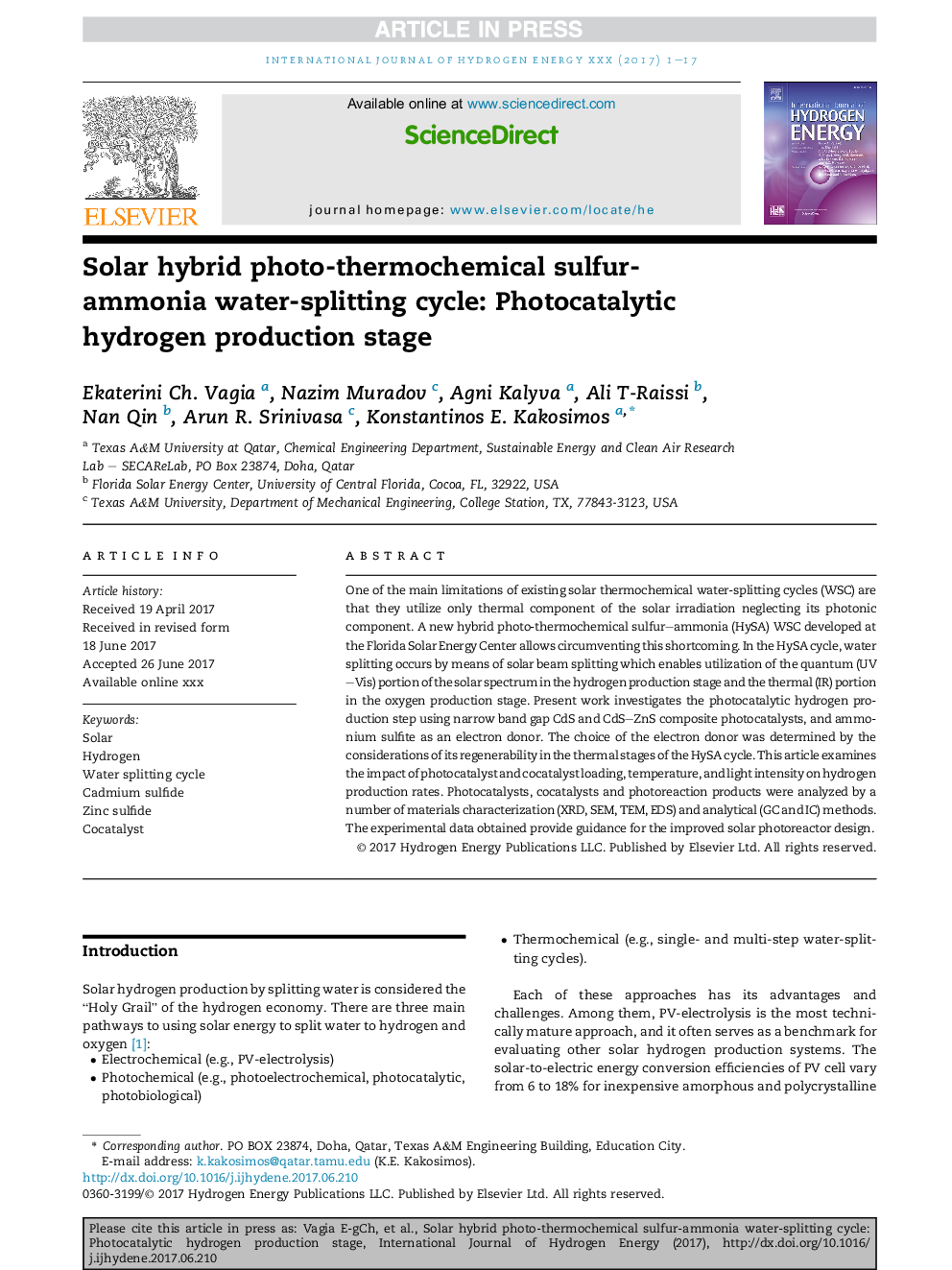| Article ID | Journal | Published Year | Pages | File Type |
|---|---|---|---|---|
| 5146272 | International Journal of Hydrogen Energy | 2017 | 17 Pages |
Abstract
One of the main limitations of existing solar thermochemical water-splitting cycles (WSC) are that they utilize only thermal component of the solar irradiation neglecting its photonic component. A new hybrid photo-thermochemical sulfur-ammonia (HySA) WSC developed at the Florida Solar Energy Center allows circumventing this shortcoming. In the HySA cycle, water splitting occurs by means of solar beam splitting which enables utilization of the quantum (UV-Vis) portion of the solar spectrum in the hydrogen production stage and the thermal (IR) portion in the oxygen production stage. Present work investigates the photocatalytic hydrogen production step using narrow band gap CdS and CdSZnS composite photocatalysts, and ammonium sulfite as an electron donor. The choice of the electron donor was determined by the considerations of its regenerability in the thermal stages of the HySA cycle. This article examines the impact of photocatalyst and cocatalyst loading, temperature, and light intensity on hydrogen production rates. Photocatalysts, cocatalysts and photoreaction products were analyzed by a number of materials characterization (XRD, SEM, TEM, EDS) and analytical (GC and IC) methods. The experimental data obtained provide guidance for the improved solar photoreactor design.
Related Topics
Physical Sciences and Engineering
Chemistry
Electrochemistry
Authors
Ekaterini Ch. Vagia, Nazim Muradov, Agni Kalyva, Ali T-Raissi, Nan Qin, Arun R. Srinivasa, Konstantinos E. Kakosimos,
